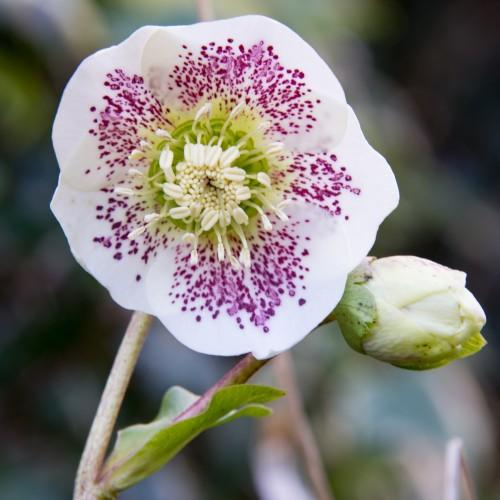
hellebore
Helleborus hybridus 'Pine Knot Best R & C'
Cycle:
Herbaceous Perennial
Watering:
Average
Hardiness Zone:
4 - 9
Flowers:
Flowers
Sun:
Part shade,full shade
Leaf:
Yes
Growth Rate:
Low
Maintenance:
Low
Drought Tolerant:
Yes
Salt Tolerant:
Yes
Care Level:
Medium
watering
Hellebore typically do not require frequent watering unless the soil becomes extremely dry. During the spring and summer, water your hellebore once a week in the morning so that the leaves have enough time to dry off before evening. Allow the top 2 inches of soil to dry out before watering, and then water the soil until it is moist but not completely saturated. Avoid getting the foliage wet when you water, as this can lead to disease. In the fall and winter, when growth slows down, water much less often. Only water your hellebore when the soil is completely dry, and stop watering it once temperatures start to consistently drop below 50 degrees Fahrenheit.
sunlight
Hellebore (Helleborus hybridus 'Pine Knot Best R & C') is a shade-loving plant that grows best when placed in partial shade or filtered light. When establishing it in a new home, it is best to keep it out of the direct hot midday sun. If in too much sun, the foliage may dry out and cause stunting of growth. For optimal growth, the hellebore should receive 5-6 hours of direct sunlight each day. If the plant is in full sun, it should remain there for only a few hours of the day, preferably early morning and late afternoon. Throughout the summer, try to give it some afternoon shade, if outdoor temperatures remain high, by placing a sheer curtain or shade cloth over the plant.
pruning
Hellebore is a great choice for lush evergreen foliage and showy blooms in the winter garden. Pruning should typically take place after flowering, usually during late March or early April. Begin by removing any dying or damaged foliage, then cut back the stems to within a few inches of the ground. To help promote air circulation and keep the plant looking tidy, trim back any overgrown stems that are obscuring the form of your hellebore. Proper pruning will help encourage a healthier plant, with stronger stems and more bloom power.
